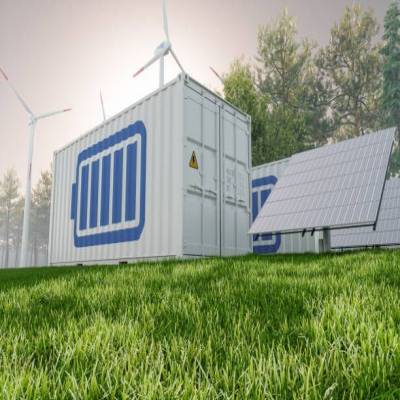

The Solar Energy Corporation of India Limited (SECI), a public sector body under the Ministry of New & Renewable Energy, has invited bids for establishing a 500 MW/1000–MWh Standalone Battery Energy Storage Systems (BESS).
It would be a first–of–its–kind tender in India and supply storage facilities to power distribution firms based on demand. The tender is the first step toward the government's immediate goal of installing 4000 MWh of battery storage capacity to help the national grid absorb more renewable energy. The Ministry of Power (MoP) has suggested that in 2029–30, a battery energy storage capacity of 27,000 MW/108,000 MWh (4–hour storage) would be added to the installed capacity. A BESS system consists of batteries that may be charged by solar power during the day and then used in the evening or night. As coal plants now meet nighttime power demand, combining a battery system with a solar power plant would reduce reliance on coal and allow more renewable energy to be delivered to households and establishments. India has committed to a target of 500 GW (gigawatts) of renewable energy (RE) capacity by 2030, as part of the promise of Prime Minister Narendra Modi at the United Nations Conference of Parties in Glasgow last year. This is dependent on solar–BESS. According to the International Energy Agency (IEA), by 2040, India will possibly have over 140 GW of battery storage, the most of any country. The government told the media that the country would need 27 GW of grid-connected BESS by 2030. As per the Observer Research Foundation, more recent academic research suggests that India would require 63GW/252 GWh (gigawatt hour) BESS to meet the objective of 500 GW of solar energy generating capacity. While the BESS systems have helped in maintaining electricity during coal-fired plant outages, they have also been engaged in accidents and fire dangers. Analysts say that because they rely mainly on lithium-ion batteries, and might be costly to deploy on a big scale in India. The SECI tender is for a 1000 MWh capacity (500 MW x 2 hours), divided into two projects of 500 MWh (250 MW x 2 hours) each, to be erected near the Fatehgarh-III grid-substation in Rajasthan. The firm would buy 60% of installed capacity under the tender on behalf of power purchasing companies. Meanwhile, the remaining 40% can be sold by project developers through third-party or market sales. The system must be available for two operating cycles per day or two complete charge-discharge cycles per day, whichever comes first. A successful project should be able to produce electricity at least 95% of the time each year. The initiatives would last 12 years.